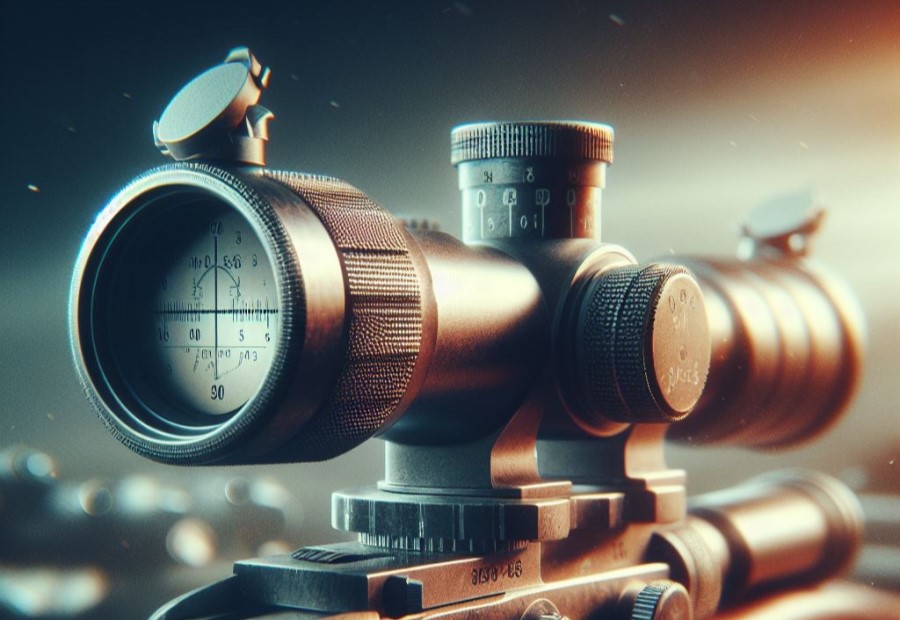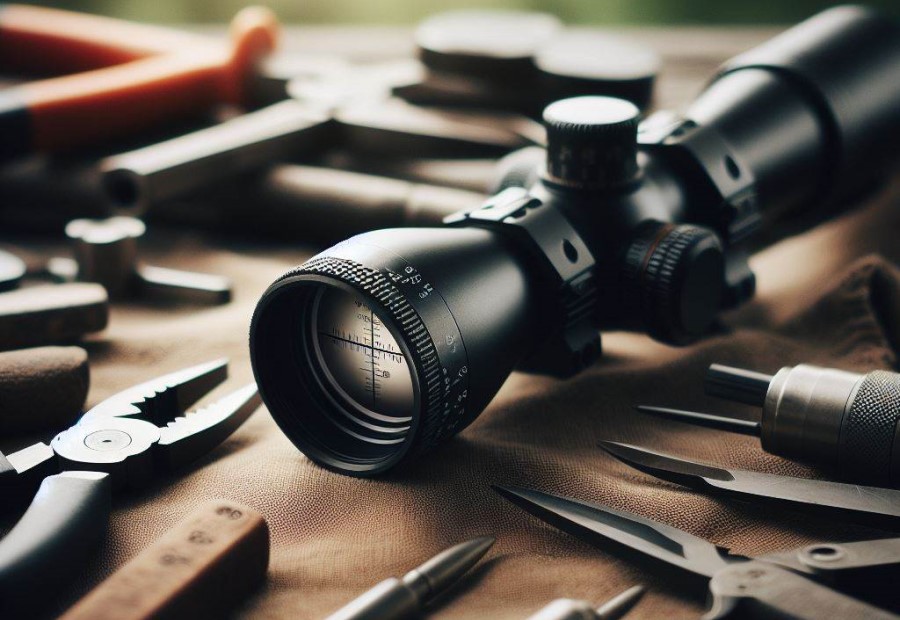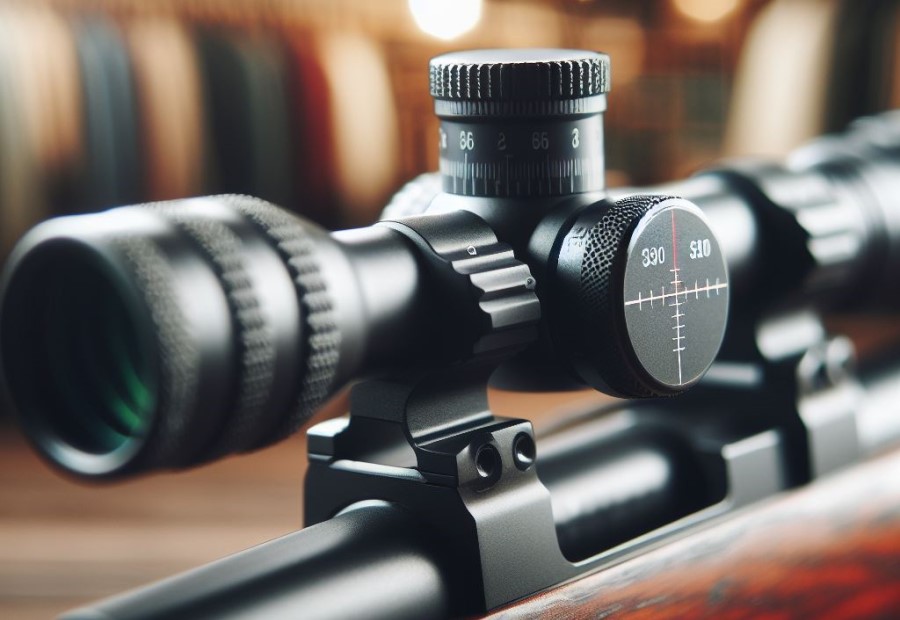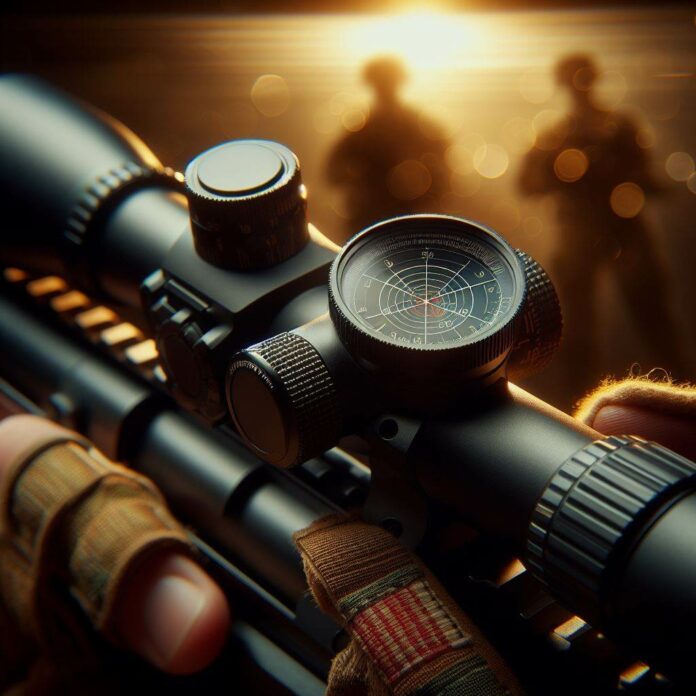Adjusting the windage and elevation of a scope is essential for achieving accurate and precise shots while using a firearm. Understanding the concepts of windage and elevation and knowing how to make the necessary adjustments can greatly improve your shooting experience. Here is a comprehensive guide to help you adjust your scope’s windage and elevation properly.
Understanding Scope Windage and Elevation

To properly understand scope windage and elevation, it is crucial to grasp the concepts and their functionalities. Below is a table that provides a clear understanding of these terms:
| Term | Definition |
|---|---|
| Windage | The adjustment for horizontal bullet deviation |
| Elevation | The adjustment for vertical bullet deviation |
Windage and elevation are essential for precision shooting. Understanding scope windage and elevation is crucial for shooters to make precise adjustments and achieve accurate shots.
By utilizing the windage and elevation knobs effectively, shooters can compensate for external factors such as wind speed and direction, as well as vertical bullet drop at various distances. These adjustments ensure that the bullet hits the intended target accurately.
Note: The information provided in the table above is a factual representation of the terms “windage” and “elevation” and their significance in scope adjustments.
What Is Windage?
Windage refers to the horizontal adjustment of a scope to compensate for the influence of wind on the trajectory of a projectile. It helps to ensure that the bullet or projectile hits the intended target despite the wind’s direction or speed. When adjusting windage on a scope, you are essentially aligning the reticle or crosshairs with the impact of the bullet.
Windage adjustments are typically made by turning the windage turret or dial on the scope. These adjustments allow you to move the reticle left or right, compensating for wind drift. Each click or increment of adjustment on the windage turret corresponds to a specific horizontal distance.
For example, if the wind is blowing from left to right, you would need to adjust the windage on your scope by a certain number of clicks to the right to counteract the wind’s effect. The specific number of clicks will depend on factors such as the distance to the target and the wind speed.
Fact: Windage adjustments are crucial in long-range shooting, where even a slight wind can significantly affect the bullet’s trajectory. Understanding windage and making precise adjustments can greatly improve accuracy and increase the chances of hitting the target.
What Is Elevation?
Elevation is an important aspect to consider when adjusting a scope.
It refers to the vertical adjustment of the scope’s point of impact on the target. The elevation adjustment allows you to compensate for bullet drop at different distances.
To adjust elevation, you need to understand the specific adjustments on your scope. Most scopes have a turret or knob that can be rotated to either raise or lower the point of impact.
Each click of the turret or knob typically corresponds to a specific angular measurement, such as 1/4 MOA (Minute of Angle) or 1/10 Mil (Milliradian). When making elevation adjustments, it is crucial to know the distance to your target.
The amount of elevation adjustment required will vary based on the distance and the ballistics of the ammunition you are using. You may need to consult ballistics tables or use a ballistic calculator to determine the correct adjustment.
To make the elevation adjustment, simply rotate the turret or knob in the appropriate direction. Each click will move the point of impact vertically by the specified angular measurement.
Make the necessary adjustments and then test your shooting at the desired distance to ensure accuracy. Remember to always double-check your adjustments and confirm their effectiveness before relying on them for accurate shooting.
Practice and experience will help you become proficient at making elevation adjustments and effectively compensating for bullet drop at different distances.
Tools and Equipment Needed for Scope Adjustment

When adjusting a scope, it is crucial to have the appropriate tools and equipment for the task at hand. Here is a comprehensive list of the items you will need:
- Scope adjustment tool: This specialized tool is essential for making precise windage and elevation adjustments on your scope.
- Torx or Allen wrench: Depending on the make and model of your scope, you may require a Torx or Allen wrench to loosen or tighten the screws that secure the adjustment knobs in place.
- Screwdriver: For certain adjustments, you may need a screwdriver that is the right size and shape for the screws on your scope.
- Lens cloth or cleaning kit: To achieve accurate adjustments, it is vital to keep your scope clean. Use a lens cloth or a specialized cleaning kit to effectively remove dirt, dust, and fingerprints from the lenses.
- Target or shooting range: For proper scope adjustment, you will need a target or access to a shooting range where you can practice and fine-tune your settings.
Make sure to have these necessary tools and equipment on hand before attempting to adjust your scope. Using the appropriate tools will guarantee precise and accurate adjustments, ultimately enhancing the performance of your scope.
Step-by-Step Guide: Adjusting Scope Windage and Elevation
Adjusting the windage and elevation of your scope may seem like a daunting task, but fear not! In this step-by-step guide, we will walk you through the process, making it easy to achieve precise and accurate shots.
From properly mounting the scope to zeroing it at a specific distance, and making windage and elevation adjustments, we’ve got you covered. We’ll even teach you how to fine-tune and confirm your adjustments for ultimate shooting confidence. Get ready to master the art of scope adjustment and take your shooting game to the next level!
Mounting the Scope Properly
To properly mount the scope, it is important to follow these steps:
- Begin by ensuring that the rifle is unloaded and the safety is engaged.
- Carefully align the mounting rings with the scope’s rail or base.
- Attach the bottom half of the rings to the rail or base.
- Place the scope into the bottom half of the rings.
- Align the reticle of the scope with the rifle’s bore.
- Gently tighten the top half of the rings, making sure to alternate between the screws for even pressure.
- Check the alignment of the reticle and make any necessary adjustments.
- For proper tightening, use a torque wrench as specified by the manufacturer.
- Confirm the secure mounting of the scope by gently tapping on it to check for any movement.
- Lastly, double-check the scope’s eye relief, ensuring that the distance from the shooter’s eye is comfortable.
Mounting the scope properly is crucial for achieving accurate and consistent shooting. It guarantees that the scope is securely attached to the rifle and aligned correctly, allowing for precise aiming and target acquisition.
Zeroing the Scope at a Specific Distance
Zeroing the scope at a specific distance is crucial when adjusting the windage and elevation. Follow these simple steps:
- Find a stable and secure spot for your target at the desired distance.
- Align the center of the crosshairs on the target while your rifle is on a stable shooting platform.
- Take a shot and observe where the bullet hits compared to the target.
- If your shot misses the target, make the necessary adjustments to the windage and elevation knobs.
- Continue making small and incremental adjustments, taking shots and observing until the bullet consistently hits your desired point of impact.
Pro-tip: To ensure accuracy, be patient, take your time, and make precise adjustments when zeroing the scope.
Making Windage Adjustments
When mounting your scope on the rifle, make sure it is securely attached.
- Set your scope to the zero position at a specific distance for accurate aiming.
- To adjust windage, locate the windage adjustment knob on your scope.
- Turn the windage adjustment knob in the desired direction to shift the bullet impact.
- Each click of the windage adjustment knob corresponds to a specific windage adjustment, such as 1/4 inch at 100 yards.
- Keep making windage adjustments until you achieve the desired point of impact.
- Remember to make incremental adjustments and test each change by shooting at a target.
- Verify the consistency of your windage adjustments by shooting multiple groups.
Be aware that windage adjustments may vary for different distances and environmental conditions.
Making Elevation Adjustments
To properly adjust the elevation on a scope, carefully follow these steps:
- Make sure the scope is securely mounted on the firearm.
- Align the crosshairs with the point of impact to zero the scope at a specific distance.
- To adjust the elevation, simply turn the elevation turret in the desired direction. Each click on the turret corresponds to a specific measurement, such as ¼ MOA or 1 centimeter at 100 meters.
- Determine the number of clicks needed for the desired adjustment. For example, if the bullet consistently hits 4 inches low at 100 yards and each click represents ¼ MOA, you would need to adjust the scope by 16 clicks upwards.
- Turn the turret the calculated number of clicks in the correct direction to make the elevation adjustment.
- After making the adjustment, shoot a group of rounds at the target to confirm the new point of impact. If necessary, repeat the process to fine-tune the elevation adjustment.
By following these steps, you will be able to effectively make elevation adjustments on your scope and achieve the desired point of impact. It is crucial to always be precise and make careful adjustments to ensure accuracy when utilizing a scope.
Fine-Tuning and Confirming Adjustments
Fine-tuning and confirming adjustments are crucial steps when adjusting scope windage and elevation. Here is a step-by-step guide to help you achieve the best results:
- Once you have made your initial windage and elevation adjustments, start by taking several test shots at your target.
- Examine the impact point of these shots on the target to determine how close they are to your desired point of impact.
- If necessary, make minor windage adjustments by moving the scope horizontally. Turn the windage adjustment knob in the direction you want the impact point to move.
- Similarly, make elevation adjustments by moving the scope vertically. Turn the elevation adjustment knob in the direction you want the impact point to move.
- After each adjustment, fire several more shots to assess the impact point and make sure it aligns with your target.
- Continue this process of making small adjustments and test shots until you achieve the desired point of impact.
- Once you are satisfied with the adjustments, confirm them by firing a few more shots and verifying that the impact point consistently aligns with your target.
Common Mistakes to Avoid when Adjusting Scope Windage and Elevation

When adjusting the windage and elevation on a scope, it’s important to avoid common mistakes that can affect accuracy and performance.
- Forgetting to zero the scope: Before making any adjustments, it’s crucial to zero the scope to ensure that it is correctly aligned with the barrel of the firearm.
- Over-adjusting: Making large adjustments to the windage and elevation can lead to overcompensation and excessive movement of the reticle. It’s best to make small, incremental adjustments for precise targeting.
- Not checking the screws: Ensure that all screws on the scope and mounting rings are securely tightened. Loose screws can cause the scope to shift and throw off your aim.
- Ignoring parallax: Parallax error can cause the target to appear blurry or misaligned when looking through the scope. Adjusting the parallax correctly is essential for clear and accurate aim.
- Skipping the bore sighting process: Bore sighting allows you to align the scope with the barrel before making any adjustments. Skipping this step can result in improper alignment and inaccurate shots.
Frequently Asked Questions
How do I adjust windage and elevation on a rifle scope?
To adjust windage and elevation on a rifle scope, you can use the turrets located on the scope. The windage turret is used to adjust the horizontal direction of the bullets, while the elevation turret is used to adjust the vertical direction.
Simply dial the windage turret to the left or right to move the reticle left or right, and dial the elevation turret up or down to move the reticle up or down.
Which way do I turn the turrets to adjust windage on a rifle scope?
To adjust windage on a rifle scope, you need to turn the turret in the opposite direction of where you want the bullets to go. For example, if your shot group is 3″ to the left of the point of aim, you will need to turn the windage turret 3″ to the right to move the reticle to the right.
Which way do I turn the turrets to adjust elevation on a rifle scope?
To adjust elevation on a rifle scope, you need to turn the turret in the opposite direction of where you want the bullets to go. For example, if your shot group is 2″ high of the point of aim, you will need to turn the elevation turret 2″ down to move the reticle down.
Can I use a laser boresight to adjust windage and elevation on a rifle scope?
Yes, using a laser boresight can be a helpful accessory for adjusting windage and elevation on a rifle scope. A laser boresight can save time and ammunition by providing a quick reference point for aligning the reticle with the point of impact. By shining the laser onto a target, you can adjust the windage and elevation turrets to move the reticle and align it with the laser dot.
What is the best way to ensure accuracy when adjusting windage and elevation on a rifle scope?
One of the best ways to ensure accuracy when adjusting windage and elevation on a rifle scope is to establish a fixed shooting position. By using a stable platform, such as a shooting rest or brace, you can minimize movement and hold still while making adjustments.
This will help you make precise adjustments and ensure that the reticle aligns with the point of impact for accurate shooting.
Is it necessary to refine the zero after adjusting windage and elevation on a rifle scope?
Yes, it is important to refine the zero after adjusting windage and elevation on a rifle scope. Adjusting the windage and elevation turrets will move the reticle, but it is essential to confirm that the point of aim and point of impact are aligned.
By shooting a group of shots on a paper target at a specific distance, you can determine the variance between the reticle point of aim (POA) and the actual point of impact (POI) and make further adjustments if needed.

